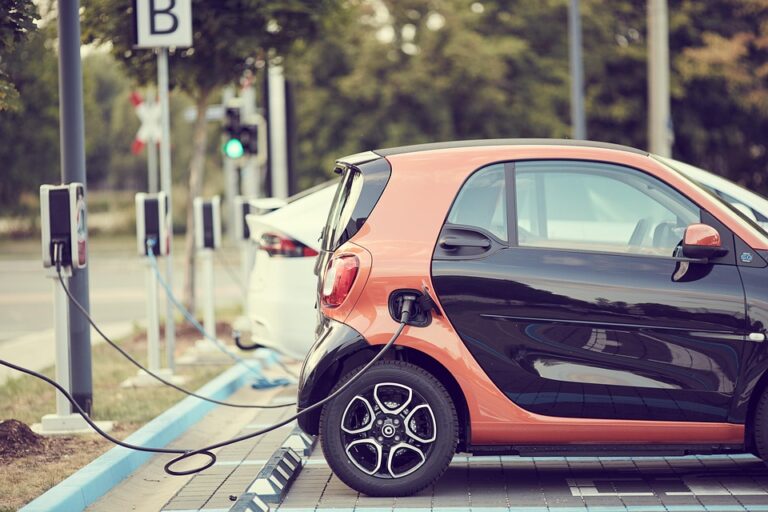Navigating the EV Charging Landscape: A Comparison of Public Charging Networks
As electric vehicles (EVs) continue to gain momentum, understanding the intricacies of public charging networks has become vital for both current and prospective EV owners. The proliferation of electric charging stations across urban and rural landscapes offers a range of options, but with that variety comes confusion about which networks are best suited to meet users’ needs. This comprehensive guide aims to demystify the EV charging landscape, comparing prominent charging networks, their features, and what drivers should look for when selecting a charging solution.
The Rise of Electric Charging Stations
The transition from gasoline-powered vehicles to electric vehicles represents a monumental shift in the automotive industry. As more automakers commit to electric models, the need for robust charging infrastructure becomes paramount. Public charging networks are at the forefront of this expansion, providing drivers the convenience needed for seamless travel. In addition to home charging stations, these networks play a crucial role in the overall EV experience.
Understanding Public Charging Networks
Before diving into specific networks, it’s essential to understand the types of charging stations available:
Level 1, Level 2, and DC Fast Charging
- Level 1 Charging: Using a standard household outlet, this method provides the slowest charging speed and is generally suitable for overnight charging at home.
- Level 2 Charging: This type uses 240-volt outlets and offers faster charging, making it ideal for public locations such as parking lots and shopping centers.
- DC Fast Charging (Level 3): The quickest way to recharge, DC fast chargers can provide significant power in under an hour and are typically found along highways for long-distance travel.
Major Public Charging Networks
1. ChargePoint
Overview: ChargePoint is one of the largest EV charging networks worldwide, boasting over 100,000 charging locations across various segments.
Key Features:
- User-Friendly App: The ChargePoint app allows users to find nearby stations, check availability, and start charging sessions.
- Flexible Payment Options: Users can pay through the app or use a ChargePoint card, making transactions straightforward.
- Robust Network: With stations in urban areas and along highways, ChargePoint offers excellent coverage for everyday and long-distance driving.
2. Electrify America
Overview: Sponsored by Volkswagen as part of their settlement over the emissions scandal, Electrify America emphasizes DC fast charging.
Key Features:
- Rapid Charging: Electrify America stations can deliver up to 350 kW, enabling drivers to charge their vehicles significantly in just 20-30 minutes.
- Wide Coverage: Major highways and urban areas feature Electrify America stations, aimed at easing longer trips across the country.
- One-Stop App: Their app offers real-time station availability and detailed user guidance, enhancing the charging experience.
3. Tesla Supercharger
Overview: Tesla’s Supercharger network is a cornerstone for Tesla owners, present in strategic locations globally to support long-distance travel.
Key Features:
- Exclusive Network: While Tesla Superchargers only cater to Tesla vehicles, their widespread locations make long trips efficient.
- Fast Charging Technology: Capable of providing up to 250 kW, stations can charge a Tesla to about 80% in roughly 30 minutes.
- Navigation Integration: Tesla vehicles automatically route drivers to the nearest Supercharger along their navigation path.
4. EVgo
Overview: EVgo primarily focuses on urban centers and is known for its commitment to renewable energy sources.
Key Features:
- Fast Charging Access: EVgo offers DC fast charging and typically charges at rates up to 100 kW, suitable for quick stops.
- Convenient Locations: Strategically placed in shopping centers and similar venues, users can easily power up while running errands.
- Membership Benefits: EVgo provides flexible membership plans with various pricing options that cater to different driving habits.
Factors to Consider When Choosing a Charging Network
With various charging networks available, there are several factors consumers should take into account:
Accessibility and Availability
Examine the density of charging stations in your area and along your typical routes. Ensure the network you choose has enough stations to prevent range anxiety and facilitate long journeys.
Charging Speed
Consider your needs for charging speed based on your daily driving habits. If you frequently take long trips, prioritize networks with DC fast chargers.
Payment and Pricing Structure
Look for networks that offer flexible payment options and transparent pricing. Some networks might charge membership fees, while others operate on a pay-per-use basis.
Features and Support
Many apps provide additional services like real-time updates on station availability, user reviews, and support. Choosing a network with a robust app can significantly enhance your experience.
Conclusion
Navigating the EV charging landscape doesn’t have to be complicated. By understanding the characteristics of different public charging networks and considering factors like accessibility, speed, and payment options, you can select the best solution for your needs. As the EV market expands, so too will the charging infrastructure, making it an exciting time to embrace electric driving.
Whether you’re a seasoned EV owner or just beginning your journey, staying informed about the available electric charging stations and choosing a network that aligns with your driving habits is essential for a seamless experience on the road. Charge ahead with confidence!


